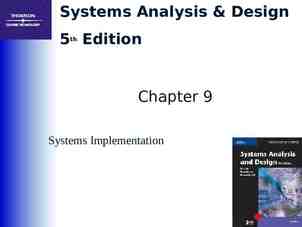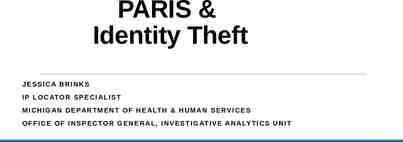ABNORMAL PSYCHOLOGY
42 Slides4.12 MB

ABNORMAL PSYCHOLOGY

CAUSES OF ABNORMAL BEHAVIOR

CAUSES OF ABNORMAL BEHAVIOR Biological/Genetic View as mental disorder – similar to physical disorders Diagnosis and treatment Nervous system and the brain

CAUSES OF ABNORMAL BEHAVIOR Cognitive –Emotional Deficits in cognitive processes, thoughts and beliefs

CAUSES OF ABNORMAL BEHAVIOR Environmental Unconscious conflicts Problems during Freudian psychosexual stages Childhood

DEFINITIONS OF ABNORMAL BEHAVIOR

DEFINITIONS OF ABNORMAL BEHAVIOR Statistical Frequency Occurrence of behavior compared to the behavior of the general public What is abnormal compared to everyone else?

DEFINITIONS OF ABNORMAL BEHAVIOR Deviation from Social Norms Behavior deviates from acceptable standards, norms or values What is deviant behavior?

DEFINITIONS OF ABNORMAL BEHAVIOR Maladaptive Behavior Behavior interferes with an individual’s ability to function in society Best definition When does behavior interfere with functioning?

ANXIETY DISORDERS

ANXIETY DISORDERS Generalized Anxiety Excessive or unrealistic worry about everything something bad will happen Treatment usually antidepressants or tranquilizers

ANXIETY DISORDERS Panic Disorder Recurrent or unexpected panic attacks dying, losing control, choking, chest pains Anticipatory panic can lead to agoraphobia Treatment Ativan, Xanax

ANXIETY DISORDERS Phobias Intense and irrational fear Out of proportion to the danger Intense anxiety and avoidant behavior Treatment – cognitive behavioral therapy and exposure therapy

ANXIETY DISORDERS Social Phobias Fear of social situations Public speaking / parties / group gatherings Leads to agoraphobia

ANXIETY DISORDERS Specific Phobias Fear of specific objects or situations

ANXIETY DISORDERS Obsessive Compulsive Disorder Obsessions, recurring irrational thoughts, impulses or images Treatment Anti-anxiety medication (Clomipramine/Anafranil ) Cognitive behavioral /exposure therapy

OBSESSIONS

SYMPTOMS OF OCD Obsessions Thoughts Aggressive harming self or others, horrific images, criminal impulses Contamination body waste, germs, chemicals Symmetry and Order exact or precise

SYMPTOMS OF OCD Compulsions Actions Somatic - preoccupied with body parts Counting – certain numbers Checking – doors, locks, appliances Repeating rituals Ordering and arranging Hoarding and collecting – papers, garbage, animals

MOOD DISORDERS

MAJOR DEPRESSION Major Depression long term, no interests, eating and sleeping problems, lack of concentration and energy Thoughts or attempts at suicide, cannot function for long Periods of time / treatment – antidepressants Ex: Serotonin / Prozac Paxil Combined w/ psychotherapy

BIPOLAR DISORDER Bipolar Disorder – fluctuation between periods of mania and depression Mania euphoria, cheerfulness, positive self-esteem, fast moving Depression Symptoms of major depression Treatment – Lithium reduces manic episodes

DYSTHYMIC DISORDER Dysthymic Disorder – chronically but not continuously depressed Typically “down in the dumps” Treatment similar to depression

ELECTROCONVULSIVE THERAPY (ECT) Electroconvulsive therapy - last resort treatment for major depression Electric current causes seizures 10-12 sessions Memory impairment

CAUSES OF MOOD DISORDERS Biological – underlying genetic, neurological or physiological predisposed factors Psychosocial – personality traits, amount of social support, ability to deal with stress combined with biological factors

SCHIZOPHRENIA

SCHIZOPHRENIA Type I - Positive symptoms Distorted thinking Delusions / no intellectual impairment Best chance of recovery Type II – Negative symptoms Dulled emotions Little speaking / loss of normal function Least chance of recovery

SYMPTOMS OF SCHIZOPHRENIA

DISORDERS OF THOUGHT Incoherent thought patterns, new language Irrational beliefs or delusions Paranoid Schizophrenics Delusions of grandeur

DISORDERS OF ATTENTION Difficulties in concentration Cannot focus on a chain of events Cannot talk on phone or watch television

DISORDERS OF PERCEPTION Hallucinations auditory are most common Distortion or preoccupation with body parts

MOTOR DISORDERS Strange facial expressions extremely active Catatonic or immobile frozen position

EMOTIONAL DISORDERS Inappropriate emotional responses Childish – emotional swings – hysteria Disorganized and confused crying / laughing Neglect of hygiene

CAUSES OF SCHIZOPHRENIA Large ventricles smaller brain size Small thalamus sensory information Less activity in frontal lobe emotions and disorganization Environmental causes Diathesis – genetic predisposition to stress Genetic marker

TREATMENTS Typical Neuroleptic drugs – Thorazine, Haloperidol Decrease of dopamine levels - Dopamine theory Atypical Neuroleptic drugs – Seroquel, Zyprexa, Clozapine Decrease of serotonin levels

PERSONALITY DISORDERS

Personality Disorders Paranoid – suspiciousness Schizotypical – eccentric thinking /behavior Histrionic – emotional /attention seeking Obsessive Compulsive – perfectionist Dependent – needy/submissive Antisocial – sociopath/psychopath – disregard rights of others/no guilt Conduct Disorder – behavior /violates social rules, Oppositional Defiance Disorder

DISSOCIATIVE IDENTITY DISORDER Disruption, split, breakdown in normal integrated self Consciousness, memory or sense of identity Presence of two or more distinct personality states Controversy – childhood trauma vs. false diagnosis

DISSOCIATIVE AMNESIA Inability to recall important personal information or events associated with stressful or traumatic events Not remembering events

DISSOCIATIVE FUGUE Unexpected traveling way from home or work Not remembering identity Assuming a new identity








